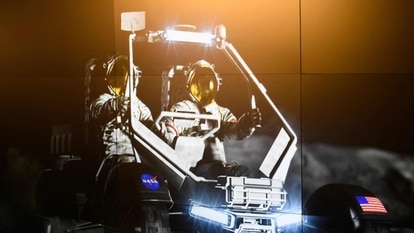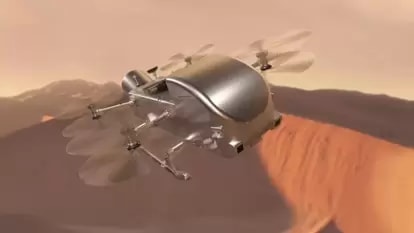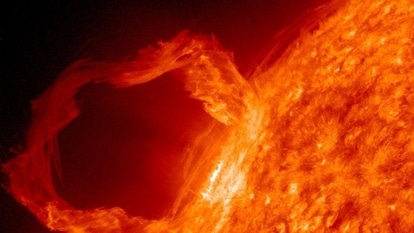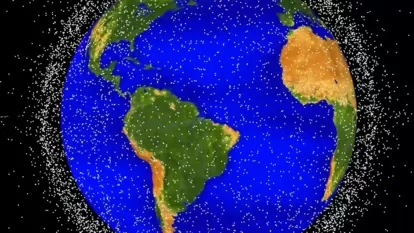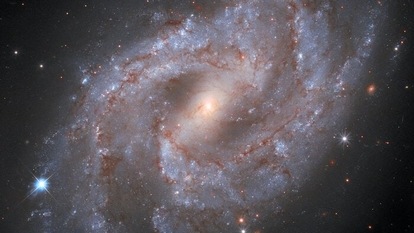NASA to hunt down asteroid across space to safeguard Earth from danger
NASA will launch a spacecraft that will chase down a bus-sized asteroid in deep space to save Earth from danger. NASA will also do a first in this regard.


Under a NASA uncrewed mission, the US space agency is set to launch a spacecraft to chase down a small asteroid in its attempt to study the potential danger asteroids of its size may pose to Earth. While the attention of NASA is on the big Near Earth Asteroids (NEA), the fact is that the smaller ones are far more numerous and they are dangerous too - the asteroid that exploded over Russian city of Chelyabinsk was just about 20 meters in diameter. When it exploded it destroyed windows and injured over 1600 people in 2013. Now, NASA's Artemis I mission, which actually aims to test out the SLS rockets and Orion spacecraft to send people to the moon, it is also going to serve the purpose of sending a Near-Earth Asteroid (NEA) Scout spacecraft to chase an asteroid named 2020 GE. It will see NASA doing a first too. According to phys.org, it will "...become the smallest asteroid ever to be visited by a spacecraft".
The Near-Earth Asteroid Scout spacecraft that NASA is planning to send is extremely small, in fact, it is as small as a shoebox. It will reach the targetted asteroid by unfurling a solar sail and use solar radiation as propulsion.
How will the Scout spacecraft study the 2020 GE asteroid?
Asteroids with a diameter of less than 330 feet (100 metres) have never been observed up close before. The spacecraft's science camera will be used to take a closer look at the 2020 GE asteroid while measuring its various aspects including size, shape, and surface to glean more information about its make up. The mission's science team will be able to determine whether 2020 GE is solid or not. This will be made possible by the Scout camera that can capture resolutions under 4 inches per pixel.
The asteroid mission will provide valuable planetary defence information about this kind of NEA. The University of Arizona's Catalina Sky Survey first spotted the 2020 GE on March 12, 2020, as part of its search for near-Earth objects for NASA's Planetary Defense Coordination Office.
The task of NEA Scout spacecraft is to also demonstrate the use of solar sails in deep space encounters. The spacecraft is too small to carry its own propulsion system and therefore, it will use sunlight to power, propel and navigate it towards the asteroid. It will employ a solar sail that will expand from a compact package to around the massive size of a racquetball court, or 925 square feet when it is released. The NEA Scout spacecraft will also demonstrate the use of solar sails in deep space encounters. The sail will provide the majority of the NEA Scout's propulsion, while small cold-gas devices with a limited fuel supply will aid movement and orientation. Because sunlight is a constant force, a small spacecraft equipped with a big solar sail may travel many miles per second. This sail is lightweight and is made of plastic-coated aluminum that is thinner than human hair.
Catch all the Latest Tech News, Mobile News, Laptop News, Gaming news, Wearables News , How To News, also keep up with us on Whatsapp channel,Twitter, Facebook, Google News, and Instagram. For our latest videos, subscribe to our YouTube channel.



